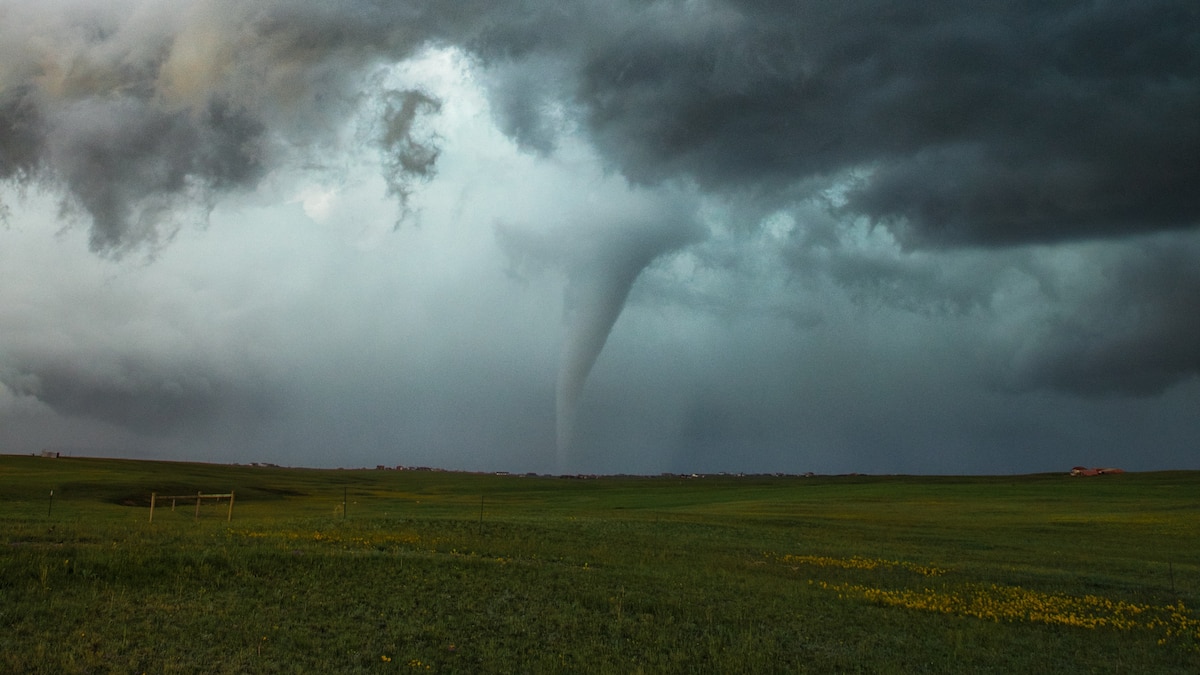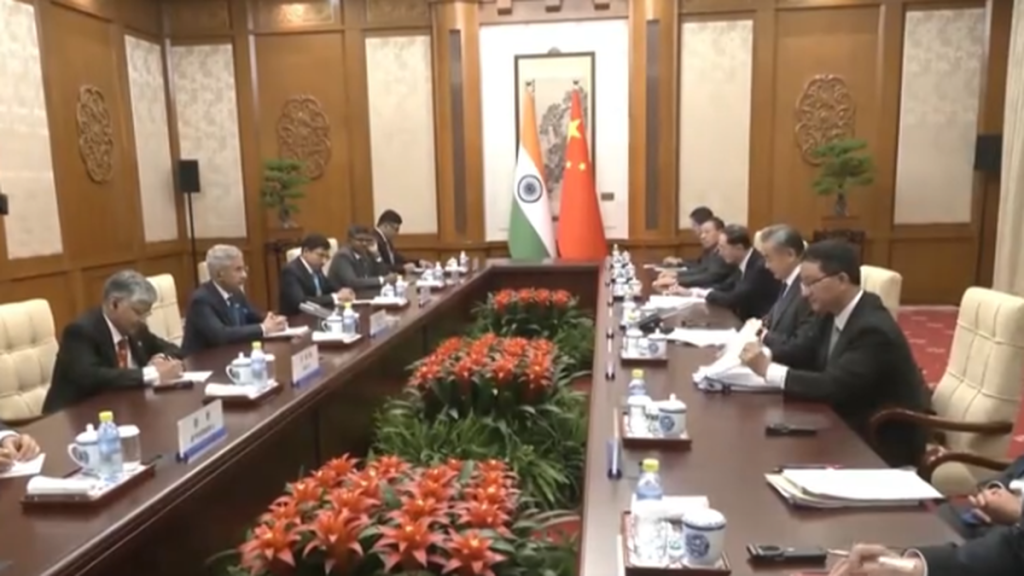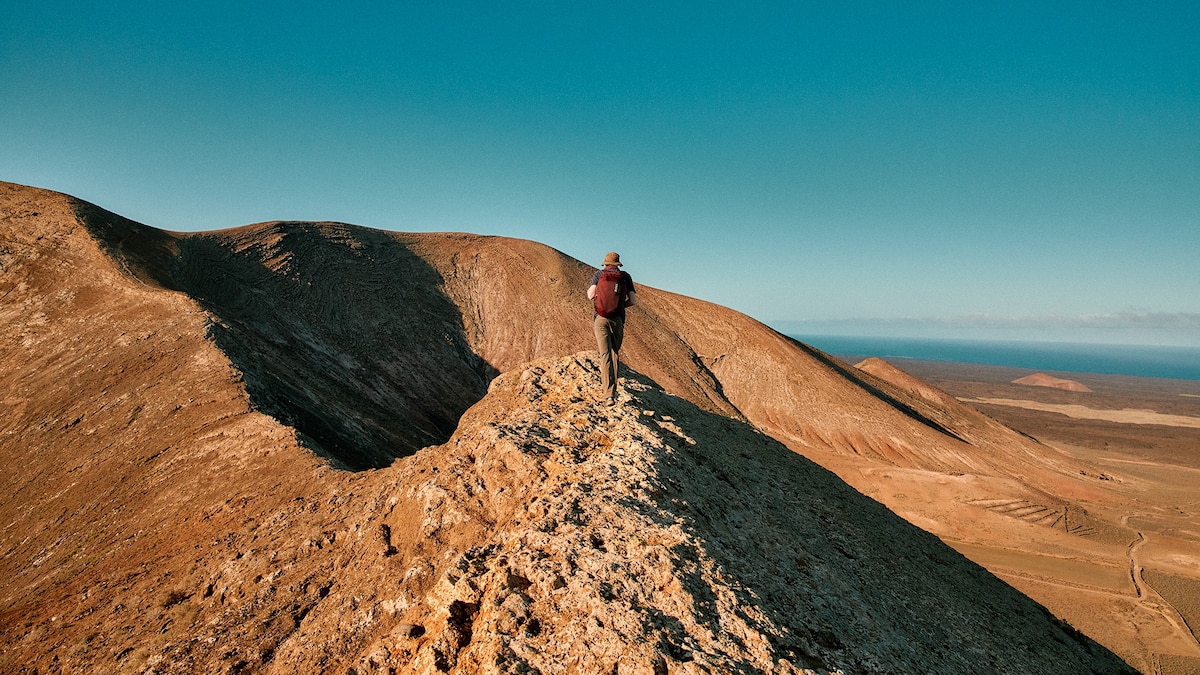Now Reading: Night tornadoes are twice as deadly—here’s why they’re growing more common
-
01
Night tornadoes are twice as deadly—here’s why they’re growing more common
Night tornadoes are twice as deadly—here’s why they’re growing more common

Tornadoes have long been ranked among the most dangerous weather events in the U.S., but those that strike after dark are significantly more deadly. Nearly twice as fatal as their daytime counterparts, nocturnal tornadoes are becoming more common as a warming climate shifts when and where severe storms form.
The risk is personal for Aaron Hill, a meteorologist and father of three. “I hate nocturnal tornadoes,” says Hill, who teaches at the University of Oklahoma. Every time a warning sounds at night, he faces the same gut-wrenching decision as many others across the Great Plains: wake the kids, or risk waiting too long.
“We have this battle of, do we wake them up for something not to happen? Do we not wake them up and then rush to get them out? I feel so unprepared,” he says.
Now, with tornado season expanding and the storm-prone “Tornado Alley” migrating eastward into more densely populated regions, researchers say the danger of nocturnal tornadoes is rising. Understanding this shift is key to reducing future fatalities, improving emergency response, and adapting to a storm season that no longer follows predictable patterns.
Why more tornadoes are striking at night
The growing threat of nocturnal tornadoes isn’t random. It’s the result of shifting storm seasons, regional vulnerabilities, and a changing climate, says Maria Molina, assistant professor in the Department of Atmospheric and Oceanic Science at the University of Maryland.
Tornado Alley’s movement to the Midwest and Southeast also increases the likelihood of nocturnal tornadoes. “There may be some statistical relationships thereof we’re seeing more nocturnal tornadoes, but it’s actually a function of the changing climate, and not necessarily daytime versus nighttime,” says Hill.
(Thunderstorms are moving East with climate change.)
The Southeast is already a hotspot for nighttime tornadoes. Between 1950 and 2019, more than 35 percent of tornadoes in states like Oklahoma, Missouri, Mississippi, and Alabama happened at night. Tennessee topped the list: 46 percent of its tornadoes struck after sunset.
Several factors contribute to this pattern. Milder temperatures allow for severe weather conditions, even in months that are not generally associated with tornado activity. And in the winter, when daylight hours are shorter, the odds of a tornado happening after dark go up since you’re moving into a time of year with fewer daylight hours, Molina says,
“Nocturnal tornadoes cause more fatalities than daytime ones, and then tornadoes in the Southeast are more fatal than ones in other locations,” says Kelsey Ellis, associate professor in the Department of Geography and Sustainability at the University of Tennessee. “Some of that’s an overlap, because we get more tornadoes at night compared to other places, but it’s also the structural issue, where we have more mobile and manufactured homes and fewer basements and storm shelters and storm cellars.”
You May Also Like
(Storm chasing is an exhilarating rush. But is it worth the risk?)
Even detecting these tornadoes hasn’t always been straightforward. Howard Bluestein, professor emeritus at the University of Oklahoma, has studied tornadoes for nearly 50 years. He says it’s hard to pinpoint whether we’re actually seeing more nocturnal tornadoes or if our detection methods have just improved over time.
“When I first started studying tornadoes, I wouldn’t go out at night. As soon as it started to get dark, we’d call off our expedition because it’s dangerous,” he explains. And if no one was outside during those hours to identify a storm or a potential tornado, it didn’t get counted. Doppler radar has changed all that. “We’ve come a long way,” Bluestein adds.
How scientists are improving tornado warning times
But there’s still more ground to cover. According to the National Weather Service, the current lead time for the most dangerous EF3, EF4, and EF5 tornadoes is 16 minutes on average. The average lead time is 13 minutes for all tornadoes.
“There’s been a lot of work, specifically because of nocturnal tornado deaths, [with] warning lead times and improving how much time we give to people to respond,” says Hill.
One study revealed that the travel time from manufactured homes in Alabama to the closest severe weather shelter sometimes exceeded the length of the advanced warning.
“Maybe [people will] be more likely to respond if they know, ‘Hey, we have 45 minutes to get somewhere,’ instead of, ‘It’s gonna happen in 10 minutes. Let’s just go hide under the bed,” says Ellis. “That could actually give those people that are more in danger of nocturnal tornadoes in the Southeast more time.”
(Here’s why we still don’t fully understand the tornado-climate change relationship.)
Scientists are working to close that gap. Hill is experimenting with AI to improve early warning detection times. “This is an open area of scientific research, but we’re really excited that we have these tools, we have the capabilities to do it, and we need to harness that ability and actually make it a reality,” he says.
The National Oceanic and Atmospheric Administration’s Warn-on-Forecast project uses computer modeling and real-time data to experiment with earlier storm predictions. The National Weather Service credited the Warn-on-Forecast technology with saving lives ahead of an EF3 tornado that hit Carter County, Missouri, in March due to a two-hour lead time. NOAA’s new Hazard Services Convective tech similarly allows forecasters to issue warnings sooner.
Whether there will be more tornadoes in a warming world is still uncertain. “That’s a tough one,” Molina says. However, given severe weather’s eastward shift and more tornadoes occurring earlier in the season, “seeing something in the winter may not be as rare,” which also means a greater chance of nocturnal tornadoes in our future.
“The more advanced warning that we can provide people, the better decisions they can make,” says Hill. “Ultimately, we can’t control what tornadoes do. We can just control what we do.”

























